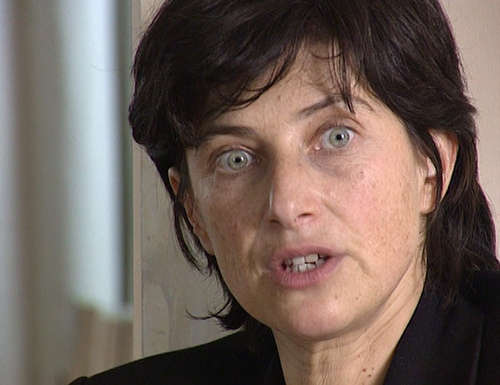This piece by Ehsan for Fandor’s Keyframe originally appeared on the day before my 70th birthday (February 26, 2013).– J.R.

Jonathan Rosenbaum at 15, imagination in the process of being liberated.
Jonathan Rosenbaum, at the cusp of seventy, talks about a life of jazz and cinema.
By Ehsan Khoshbakht February 26, 2013
The needs-no-introduction film critic Jonathan Rosenbaum turns seventy this month, but that does not mean that he has grown out of touch. His latest book, Goodbye Cinema, Hello Cinephilia (University Of Chicago Press, 2010), displays Rosenbaum’s engagement with digital-era realities, and manages something few if any critics of his generation are capable of in the current environment: optimism. Self-catalogued on his own website, the critic’s life of writing, from his late teens to the two-thousand-and-teens, coheres, and the collection of work is unmatched by any living film writer for its breadth and rigor. A closer look at his contribution to film literature (with featured articles in the weightiest of magazines and translations of his baker’s dozen books into languages as diverse as Chinese and Farsi) finds Rosenbaum generally bringing a sense of urgency to his subjects, no matter the decade.
My rather personal ties with the Chicago-based critic comes from our mutual love of jazz, which, aside from its ecstatic pleasures (that sometimes surpasses cinema’s), can assist writers in the ways they approach any other art form. Read more
From the May 20, 1988 Chicago Reader. — J.R.

BABETTE’S FEAST
** (Worth seeing)
Directed and written by Gabriel Axel
With Stephane Audran, Jean-Philippe Lafont, Gudmar Wivesson, Jarl Kulle, Hanne Stensgard, Bodil Kjer, Vibeke Hastrup, and Birgitte Federspiel.

Only when she had lost what had constituted her life, her home in Africa and her lover, when she had returned home to Rungstedlund a complete “failure” with nothing in her hands except grief and sorrow and memories, did she be come the artist and the “success” she never would have become otherwise — “God loves a joke,” and divine jokes, as the Greeks knew so well, are often cruel ones. What she then did was unique in contemporary literature though it could be matched by certain nineteenth century writers — Heinrich Kleist’s anecdotes and short stories and some tales of Johann Peter Hebel, especially Unverhofftes Wiedersehen come to mind. Eudora Welty has defined it definitively in one short sentence of utter precision: “Of a story she made an essence; of the essence she made an elixir; and of the elixir she began once more to compound the story.” — Hannah Arendt on Isak Dinesen
When Ernest Hemingway accepted his Nobel prize in 1954, he was gracious enough to acknowledge that it should have gone to Isak Dinesen instead. Read more
From the Chicago Reader (October 24, 1997). — J.R.

Chantal Akerman by Chantal Akerman
Rating *** A must see
Directed and written by Chantal Akerman.
This weekend the Museum of Contemporary Art, as part of its exhibit “Hall of Mirrors: Art and Film Since 1945,” is presenting not only Chantal Akerman, one of the finest filmmakers working anywhere, but also the two features I would describe as her greatest achievements — the 200-minute narrative Jeanne Dielman, 23 quai du Commerce, 1080 Bruxelles (1975) and the 107-minute documentary From the East (D’est, 1993). To make the program even more fully rounded, the museum is also showing a 64-minute self-portrait, Chantal Akerman by Chantal Akerman (1996), which provides an excellent introduction to her work as a whole. (This film and Akerman herself will appear on Sunday; From the East shows on Friday, and Jeanne Dielman on Saturday.)


Despite her significant and still growing international reputation, Akerman isn’t yet considered an “established” mainstream or avant-garde artist, because many critics in both spheres still treat her as something of an interloper, even an irritation or a threat. A friend who’s a highly respected novelist and film critic recently told me that he regards all her work as worthless, even though he hasn’t bothered to look at all of it. Read more






